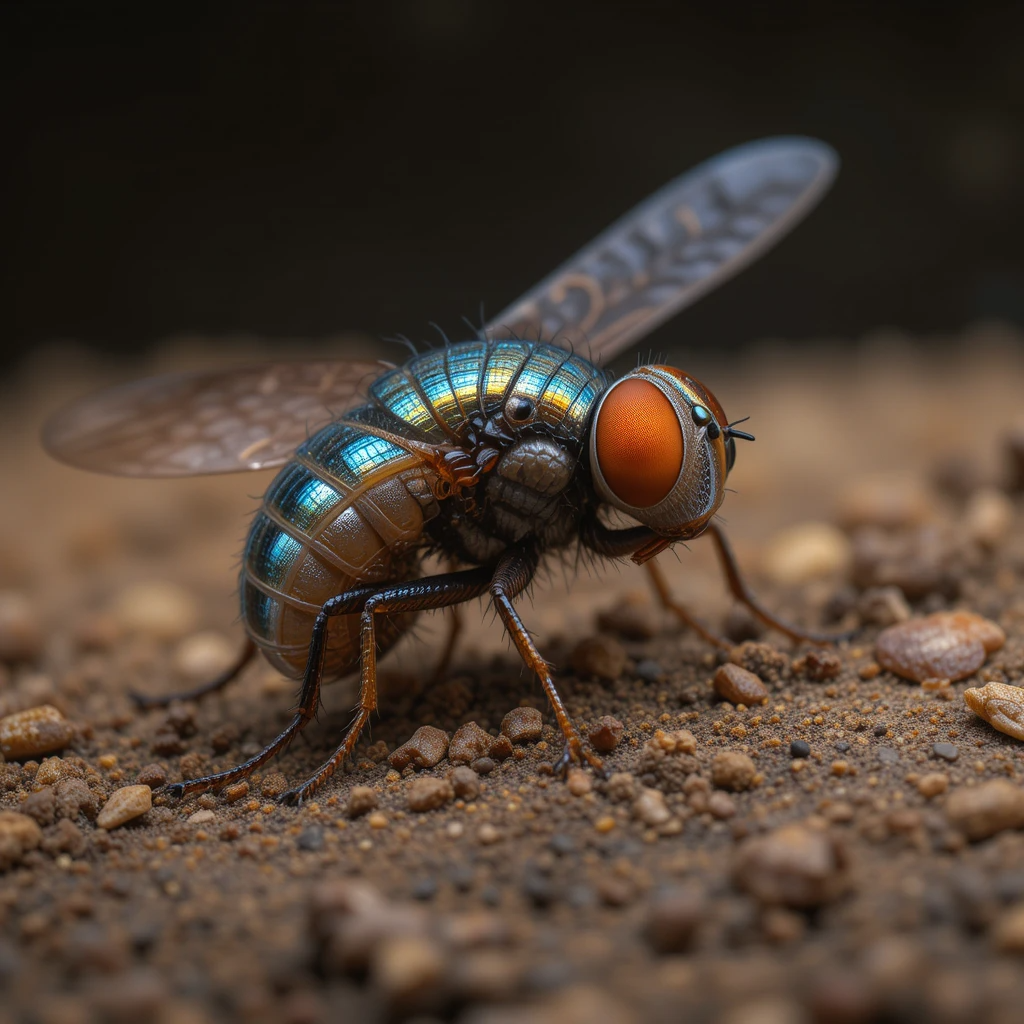The term screwworm refers to the larvae of specific fly species belonging to the genus Cochliomyia and Chrysomya.The most well-known and harmful among them is the New World screwworm fly (Cochliomyia hominivorax), native to the Americas. It is a parasitic fly that has caused significant damage to both human and animal health. This parasitic fly is although very small in size but the damage caused by this insect is very large. It has affected livestock industries, wildlife populations, and sometimes even human beings. By understanding it’s biology, life cycle and history it is essential for preventing infestations and protecting both economic and public health interests.

What is a Screwworm?
The New World screwworm is the larva of a flesh-eating blow fly, Cochliomyia hominivorax, that burrows into living tissue of warm-blooded animals. They cause severe and potentially fatal wounds. Ordinary maggots feed on dead or decaying tissue but screwworm larvae feed on living tissue, making them extremely dangerous. Once the adult female fly lays eggs in wounds, body openings, or mucous membranes, the larvae hatch and burrow into the host’s flesh in a corkscrew-like manner. That’s why they are named as “screwworm.”
Life Cycle of the Screwworm
The life cycle of a screwworm is both very interesting and horrifying. Understanding it’s life cycle is necessary to control it’s spread.
Egg Stage: A female screwworm fly can lay up to 500 eggs at a time, usually in open wounds, cuts, or even the umbilical cords of newborn animals.
Larval Stage: Within 12 to 24 hours, the eggs hatch into larvae. These larvae immediately begin feeding on the host’s living tissue, burrowing deeper as they grow. Their spiral shape makes them difficult to remove manually.
Pupal Stage: After about 5 to 7 days of feeding, the larvae drop to the ground and burrow into the soil to pupate. This stage typically lasts one to two weeks.
Adult Fly: Adult screwworm flies emerge from the soil, ready to mate and repeat the cycle. Adult flies resemble houseflies but can be distinguished by their metallic blue-green color and orange eyes.

Symptoms and Damage Caused by Screwworm
The damage caused by this parasite is severe and devastating. The larvae’s constant feeding on living tissue lead to severe pain, tissue destruction, and secondary infections. In livestock, untreated infestations can lead to death within a few weeks.
Symptoms include:
- Foul-smelling discharge from wounds
- Visible burrowing larvae in open wounds
- Tissue swelling and necrosis
- Loss of appetite and weakness in animals
- Unusual restlessness due to pain
If left untreated, screwworm infestations can spread rapidly throughout herds or wildlife populations, causing large-scale losses. CDC
Screwworm and Human Health
Humans are not immune to this because screwworm infestations are most commonly associated with livestock and wildlife. In case of humans though less frequent but can be extremely serious and often more complicated to treat.Screwworms feed exclusively on living tissue, and when they infest people, the consequences can be painful, destructive, and even life-threatening if not addressed promptly.
How Humans Become Infected
Screwworm infestations in humans usually occur when adult flies deposit eggs on open wounds, sores, or natural body openings such as the ears, nose, or eyes. The larvae then hatch and begin burrowing into the tissue in their characteristic corkscrew-like fashion. In rural or tropical regions where medical access is limited, such infestations may go unnoticed until they become severe.
Treatment and Management
Treatment of human screwworm infestation involves immediate medical intervention. Doctors typically remove the larvae manually using forceps, sometimes aided by topical agents that force the maggots to surface. In severe cases, surgical debridement may be necessary. Antibiotics are often prescribed to control secondary infections, and wound care is essential to promote healing.
Public Health Concerns
Human cases are still reported in parts of Africa, Asia, and South America where screwworm populations persist. Whether these cases are rare in developed regions but still these cases occur. Travellers returning from these regions may also unknowingly carry infestations, which highlights the importance of awareness among healthcare professionals worldwide.
Screwworm infestations in humans illustrate the broader public health significance of this parasite. Beyond livestock losses, the potential for human suffering underscores why global eradication efforts remain a critical priority.

